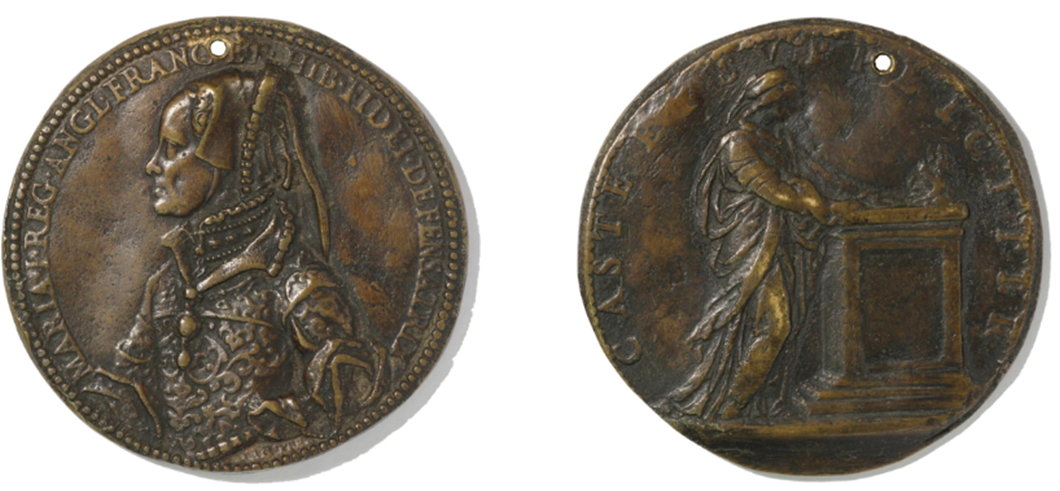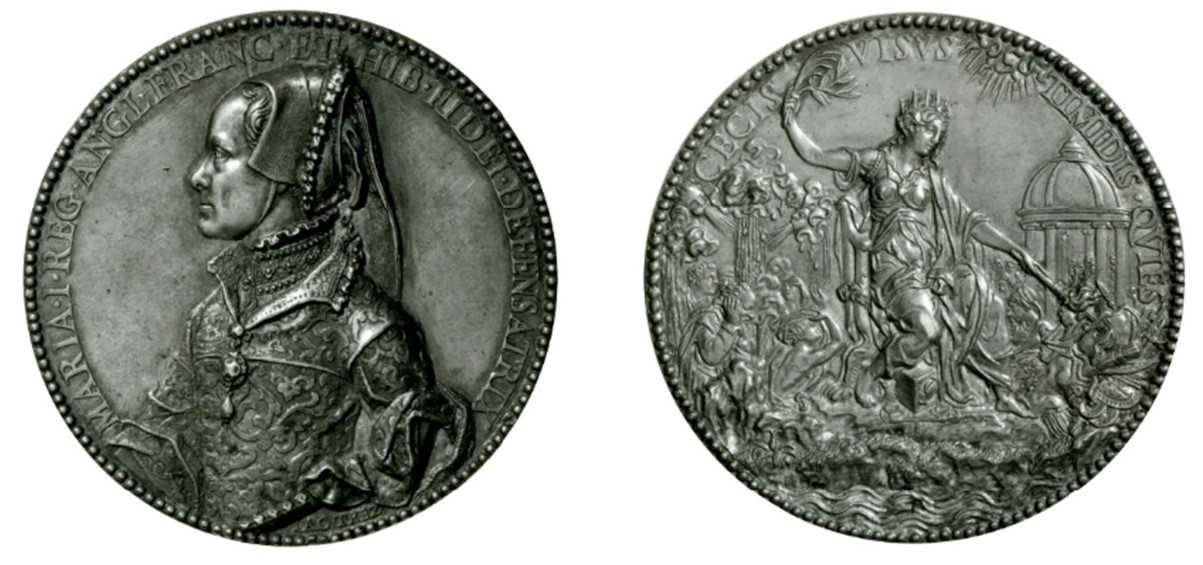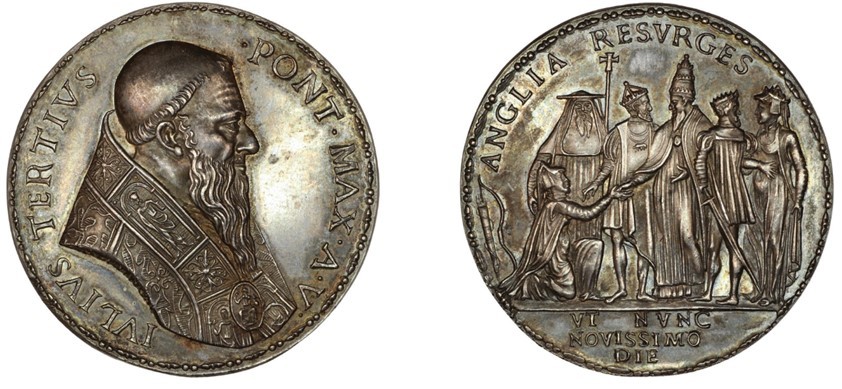The Iconography of Mary I, England's First Crowned Queen Regnant
Chapter 2 : Medals

When it comes to Marian medals, Mary, or perhaps Philip, enlisted the skill of the Italian Jacopo Nizzola Da Trezzo. His design for Mary inspired by Mor dominates the medallic imagery of Mary. One medal has the inscription ‘CASTE ET SVPPLICITER’ (Chastely and humbly). The female figure, perhaps a female seer representing Mary, is standing by an altar in a pose which suggest she is about to kneel. Upon the altar is a sacrifice being burnt. The imagery cannot be clearer, Mary is God’s Abraham and prophet upon which Catholicism is to return to England. Mary is the female vessel who will purify England from heresy. As Abraham was the patriarch of Judaism, Mary is the matriarch of a new England, a Catholic England. This medal designed in Lombardy suggests that the medal was mass produced and perhaps given as gifts to the European courts. The hole suggests this medal was used as a medallion, perhaps to show loyalty or to wish luck on the wearer. The obverse titles Mary with her English title suggesting this medal was for an English audience. Other designs were distributed throughout the reign celebrating the return to Rome and with a marriage medal in 1555.

Another medal has the reverse depicting the legend ‘CECIS VISVS TIMIIS QVIES’ (sight to the blind, rest to the fearful). Mary is portrayed as Peace and is a military leader. She burns objects of war and Protestant symbols. On her right are Protestants wailing at the sight as Mary kicks Pandora’s box into the river; heresy is at an end with Mary’s rule. The figures on the right represent her people under the tyranny of Protestantism seen with the winds portrayed. Behind Peace is the tree of Life; with Mary’s rule England will bear fruit. Behind her on her left are figures rejoicing in sunlight; they are the faithful who have remained with Rome. This medal was mass produced and created in a number of metals which suggests the medals were made for public consumption.

Yet it was not only Marian medals which the queen appeared on. A medal depicting Pope Julius III after the reunification with Rome in 1555 by Giovanni da Cavino (1500-70) depicts a female figure representing England kneeling in front of the pope while Cardinal Pole, Charles V, Philip, and Mary surround the pope. The legend ANGLIA RESVRGES, VT NVNC NOVISSIMO DIE (England you shall rise again, as now, on the last day) makes no secret of the medal’s purpose. It is a celebration of England’s return to the Church. The pope welcomes England in loving arms suggesting a reference to the parable of the Prodigal son (Luke 15:11-32). Whereas the father welcomes home his son, so does the Church to her prodigal daughter England. After the years of disobedience under Henry VIII and Edward VI, England had returned.




